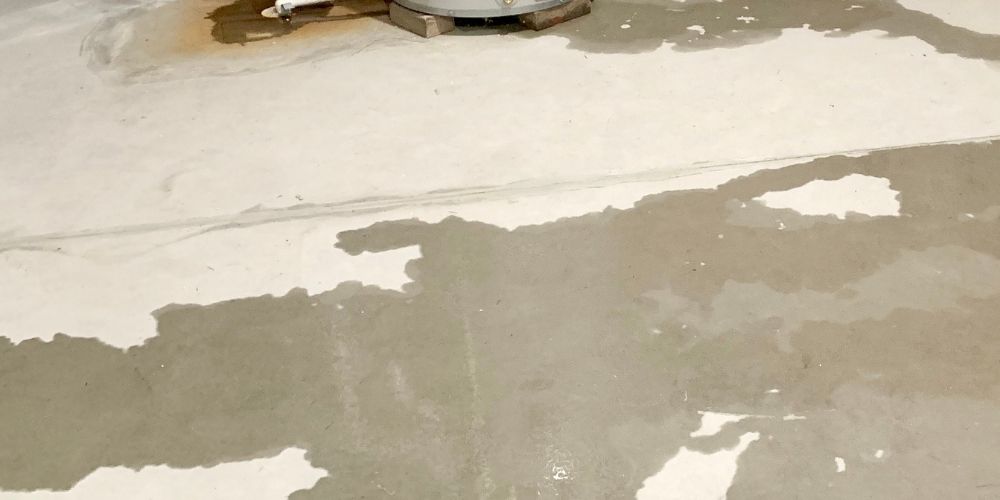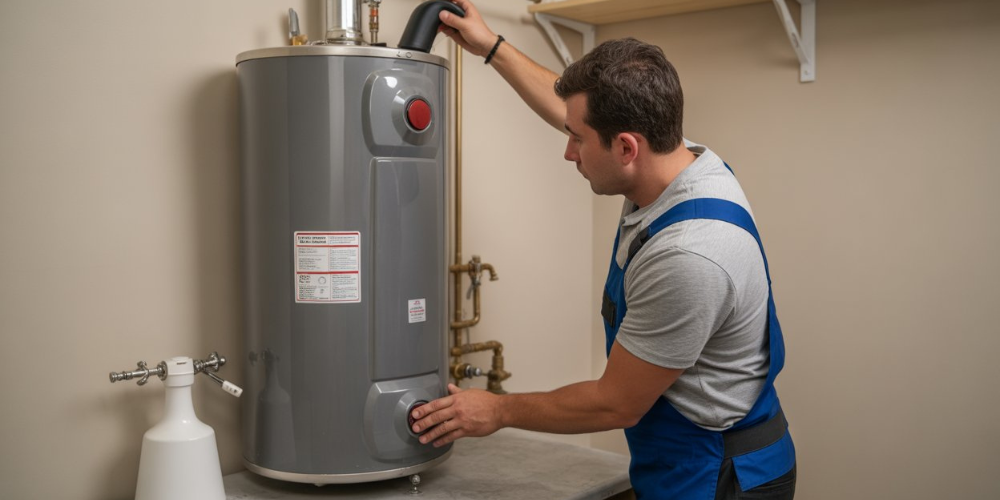If you’re noticing standing water in your shower or it’s draining slower than usual, chances are your shower drain is clogged. It’s not just an eyesore—it can throw off your whole routine and, if left unchecked, lead to expensive plumbing repairs.
The good news? You don’t always need to call a plumber right away. There are several simple DIY methods that can help clear the clog and get things flowing again. While there’s no single “best” solution, it’s smart to start with the easiest tools and techniques first.
In this guide, we’ll walk you through how to unclog your shower drain, starting with the simplest fixes and moving toward more involved solutions.
A quick heads-up: If you notice black sludge coming up from the drain, it could be a sign of a sewage blockage. That’s not something to handle on your own—call a professional plumber right away. The same goes if multiple drains or clogged toilets in your home are backing up or draining slowly. Those are signs of a bigger issue that needs expert attention.
Before You Start Unclogging Your Shower Drain
Unclogging a shower drain isn’t always simple—you might need to try more than one method. Most clogs are caused by everyday buildup, like:
- Hair and soap scum
- Grease and body oils
- Mineral deposits from hard water
- Dirt or tree roots invading underground pipes
Before you begin, remove the drain cover carefully:
- Use a screwdriver for screws (if present)
- Gently pry off covers that snap in place
- Avoid scratching the shower surface
Safety Tip: Always wear rubber gloves, and if you’re using any chemical drain openers, wear eye protection too.
How to Clear a Shower Drain with Boiling Water?

One of the simplest fixes for metal pipes is boiling water. This method can help break down soap scum and loosen minor blockages.
Here’s how to do it:
- Boil a full kettle or large pot of water
- Slowly pour the boiling water directly down the drain
- Let it sit for a minute, then test by running the shower
Warning: Do not use this method on PVC pipes—boiling water can warp or damage them.
Quick Recap:
- Hair and soap are the most common culprits
- Remove the drain cover carefully before starting
- Boiling water works best on minor clogs in metal pipes
- Wear gloves and eye protection for safety
If boiling water doesn’t work, don’t worry—there are other clog-busting methods like baking soda + vinegar, plungers, or drain snakes you can try next.
Remove Hair or Debris from the Drain

If your shower drain is still slow or clogged, chances are there’s a clump of hair and soap buildup stuck inside. You might be able to remove it with your fingers—just make sure the standing water isn’t too hot to touch.
If the clog is deeper:
- Gently remove or unscrew the drain cover
- Straighten out a wire coat hanger and make a small hook at the end
- Carefully fish around inside the drain to catch and pull out any hair or gunk
- Use a flashlight if you need help seeing inside
Once you’ve removed as much debris as possible, slowly pour a kettle of boiling water down the drain to help wash away the loosened buildup (only if your pipes are metal, not PVC).
Then, replace the drain cover and run your shower to check if the water drains smoothly.
Also read, How to Unclog a Clogged Bathtub Drain?
How to unclog a shower drain with vinegar and baking soda?
If pulling out debris and using boiling water doesn’t solve the problem, try this natural and effective DIY method:
- Mix 1/3 cup of baking soda and 1/3 cup of vinegar in a heat-resistant container.
- Remove the drain cover and pour the fizzy mixture into the drain immediately.
- Let it sit for at least one hour to break down stubborn buildup.
- After that, flush the drain with hot (not boiling) water.
This safe solution can often clear out lingering soap scum, grime, and other buildup without harsh chemicals.
Unclogging a Shower Drain with a Plunger
A plunger is a simple yet powerful tool to clear a clogged shower drain. First, remove the drain cover. Place the rubber cup of the plunger directly over the drain opening. To get a better seal, you can apply a bit of petroleum jelly around the rim.
Now, fill the shower floor with just enough water to cover the base of the plunger. Push the handle up and down quickly to create suction and dislodge the clog. Once done, run the water to check if it’s draining properly. If it is, you can replace the drain cover.
Unclog a Shower Drain Using a Drain Snake (Plumber’s Snake)

If plunging doesn’t do the trick, a drain snake—also known as an auger—can help reach deeper clogs. These tools come in manual and electric versions. For electric snakes, you’ll need a power drill, while manual ones are operated by hand.
To use one:
- Insert the snake slowly into the drain until you feel resistance.
- Turn the handle clockwise to catch the clog and keep feeding the snake in.
- Once you feel less resistance, you’ve likely broken up or hooked the clog.
- Give one last full turn, then reverse the handle to pull it out slowly.
- Remove the gunk, run hot water to test, and put the drain cover back in place.
How to unclog a shower drain with a chemical drain opener?
Chemical drain cleaners can sometimes help dissolve hair clogs, but they must be used carefully. Always wear gloves and eye protection, and ensure the room is well-ventilated. Follow all label instructions closely.
Important: These products contain harsh chemicals that can damage your pipes if used too often.
If you plan to call a plumber afterward, let them know which products you’ve already used for safety reasons.
Tips to Prevent Shower Clogs
The best way to deal with clogs is to stop them before they start. Here’s how:
- Use a drain screen: These catch hair before it goes down the drain—just clean it regularly.
- Brush your hair before showering: Less loose hair means fewer clogs.
- Flush with boiling water (for metal pipes): Do this once a week to keep soap and grease from building up.
- Use vinegar and baking soda monthly: Pour a 1/3 cup of each down the drain to break up buildup naturally.
- Avoid pouring dirty water (like mop water) into the shower drain—it can bring dirt and debris.
Final Thoughts
Dealing with a clogged shower drain might seem frustrating, but it doesn’t have to be difficult. Start with simple fixes like pouring boiling water or clearing out visible hair. If that doesn’t help, try a mix of baking soda and vinegar, use a plunger, or try a drain snake.
And if the clog still won’t clear, don’t worry—PlumbSmart’s expert plumbers are here to help and get your drain flowing again.





